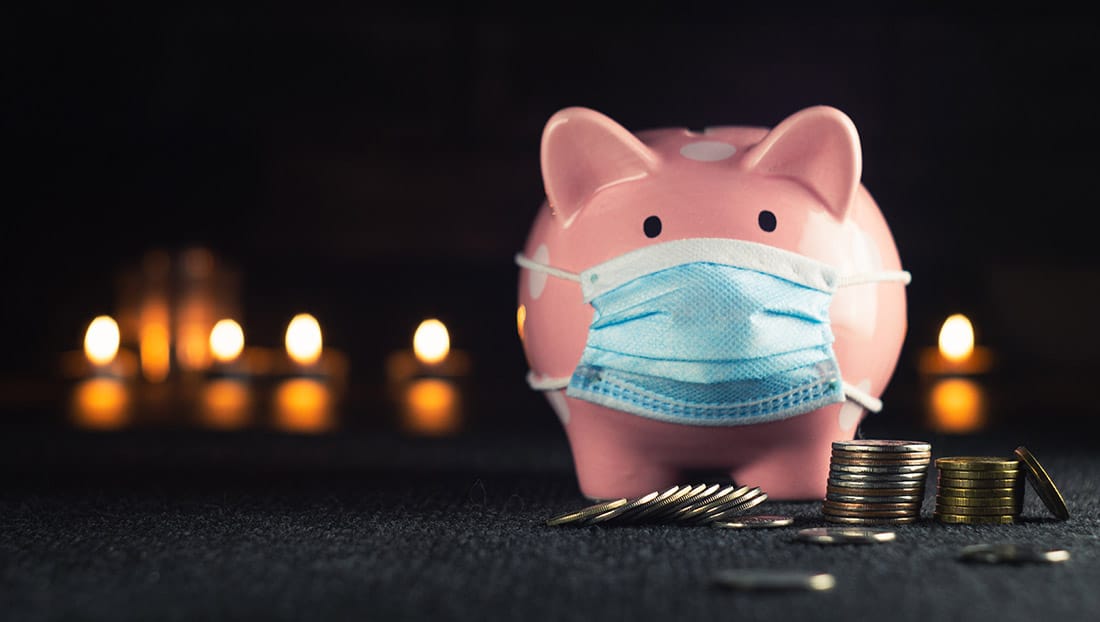As the third national lockdown comes to an end, Vicky Pryce, Board member for the Centre for Economics and Business Research explains the status quo.
2020 finished with the sharpest fall in GDP seen since the Second World War as lockdowns and self-distancing restrictions took their toll. The 9.8% reduction in GDP has been the worst in the G7 countries.
The third lockdown in early 2021 lasting for the whole of the first quarter worsened the outlook in the UK. The forecast by the Office for Budget Responsibility (OBR) that accompanied the 3 March Budget reduced the growth for the economy this year to 4% from the 5.5% predicted last November.
Impact of lockdown
But each lockdown seems to have had less of a negative impact on the economy than the previous one. The reason is that after the first period of measures, many more sectors remained open when restrictions were reintroduced.
Public sector health and care services of course continued to operate as did public administration and the financial sector. So did IT services, which boomed as people worked from home or shopped online. And for most of the later period, manufacturing and construction remained open, though self distancing rules still applied.
As a result, partly reflecting a pick up in world demand, mainly from China which came out of the lockdown earlier than most, and also partly due to the huge stimulus measures in the US, manufacturing output in the UK has been on a more or less upward trend since late spring /early summer.
Also, construction has benefited from the increased demand from the now extended stamp duty cut for houses under £500,000 in England.
The UK therefore managed against all odds to grow by 1.5% in the last quarter of 2020. The unemployment rate has stabilised at around 5%. But this figure has been flattered by some four million people who are still believed to be covered by the extended furlough scheme.
The ONS reported that the number of workers on payrolls has in fact fallen by 693,000 since February 2020 with under 25s contributing over 60% of the decline. And the path to recovery remains unclear despite what has so far been a very successful vaccine rollout in the UK.
What next?
The OBR expected a fall of 3.8 to 4% in the first three months of 2021 partly due to the lockdown impact but also the problems at the border with the EU post the end of the Brexit transition period.
When they were preparing their March forecast, UK exports to the EU had shown a fall of 40% in the month of January and imports into the UK were down by nearly 30%. And this is in despite of a Trade and Cooperation Agreement struck before Christmas that agreed on zero tariffs for goods moving between the UK and the EU.
It is still not clear whether the extra form filling bureaucracy and the health and rules of origin checks now required are just teething problems or are here to stay.
In acknowledgement the government has just announced extra financial help to firms. But there are whole areas where additional non tariff barriers have now been erected including the ability of financial institutions to sell services into the EU, restrictions on the movement of people, as well as lack of any agreement so far on reciprocal acceptance of qualifications.
In the meantime the direct fiscal stimulus to the economy is mounting up. Support to businesses, individuals and the self employed and the VAT cut for hospitality and tourism is continuing and there have been extra targeted support for the creative sectors and charities.
But all this is costly. The government has already borrowed some £355 billion (16.9 per cent of GDP) in 2020-21 and will still need to borrow £234 billion (10.3 per cent of GDP) in 2021-22. All eye watering figures by comparison to £55b the year before the pandemic struck. At some stage some of the support will be coming to an end and the pre-announced increases in corporation tax and the freezing of the income tax thresholds will have to be implemented.
But this is in the future. So, why not end on a positive note. The manufacturing Purchasing Managers Index in March grew faster than any time since February 2011. Retail sales are recovering. Non-essential shops and other outlets, including pubs and restaurants, are now gearing themselves for opening up gradually under the new lockdown roadmap. The OBR is forecasting a 7.3% bounce back of the economy next year. Fingers crossed…
Read more from Vicky Pryce: Where is the economy now?


0 Comments